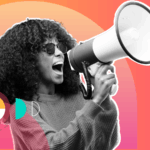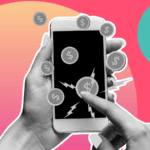By Becky Wixon, Head of Talent, Songtradr
Take a look at the nominees for this year’s Grammy awards and it might seem like women had achieved not just parity in the music industry, but near domination. Three-quarters of the nominations went to female artists, from global megastars like Beyoncé (who scooped up Album of the Year) to year-defining newcomers like Chappell Roan (winner of Best New Artist). These acts dominated the charts too, making 2024 a thrilling year for women in music. But what happens when you look beyond the headline awards and into production, composition, and decision-making? Unfortunately, the same old gender gap rears its ugly head.
Altogether, women received less than a third (28%) of this year’s nominations. Representation behind the boards is even more stark, with just one female nominated for Producer of the Year and women accounting for only 6.5% of producers across the industry. In an era where women are now outselling men in music, the disparity between chart success and behind-the-scenes representation will continue to erode women’s success in the industry. But brands and agencies can help change the tune by recognizing the influence women have behind the mic—and ultimately, the cash register.
Audiences crave authenticity
Music in advertising is a potent tool. The right song, used at the right time, can evoke intense emotions, reshape brand identity, and elevate audience recall. In fact, the right musical emotion can even influence consumer behaviors. But these choices beg a crucial question: to shape consumer experiences effectively, do brands and agencies also need to scrutinize their choice of talent behind the soundtracks?
The short answer is yes. One of my favorite mottos is “who makes the work, shapes the work”. In any field, the people working behind the scenes on production roles, directing or curating the effort, profoundly impact how audiences receive and connect with it. Why? Because the work tells authentic stories, showcases more diversity, and breeds greater innovation. Advertising can be elevated when you pay more attention to the production teams and behind-the-scenes talent. If marketers care about authenticity, then who they hire to create their music should reflect that.
Advertising resonates when people feel seen and heard. Despite women controlling 85% of consumer spending, few create the music for ad campaigns—a missed opportunity for brands and agencies.
Music in marketing shapes culture—and careers
As a brand or ad agency, you might not think you have much influence over the future of female representation. Yet in reality, every opportunity extended, no matter how small, is a crucial step toward closing the gender gap and fostering true parity.
Take Apple’s use of 1234 in their famous iPod Nano commercial, which catapulted Feist from niche indie artist to an internationally-recognized musician. Often, brands’ uses of music can spark an artist or producer’s step up into the big leagues. Much has been made of music festival representation—less than a quarter of acts performing at major US music festivals in 2024 were female, according to the Book More Women campaign. But Emily Eavis, Co-Chief of Glastonbury Festival of Contemporary Arts puts this down to a ‘pipeline’ problem; in short, female artists and producers aren’t given enough career support early on to reach the level of festival headliner.
More pathways need to be created, across education, mentorship, and finances—such as licensing a song from an up-and-coming female artist or producer. Otherwise, the same problems will persist at every stage of their careers. I can vouch for this personally: As a teenager, I attended an all-girls school that didn’t offer any courses in music production. My career in music could’ve halted right there and then. But instead, I marched to the local boys’ school, knocked on their door, and persuaded my way onto their course. I’m proud of what I did, but it shouldn’t have taken that level of persistence. We need systematic change so the next generation doesn’t have to plead to be let in.
DEI must remain a cornerstone of campaign success
Representation in music is an evergreen discussion but it felt particularly poignant during this year’s Grammy’s. Wider news of a national US rollback in diversity, equity, and inclusion (DEI) programs means we risk losing any hard-won progress. Especially for music production, which isn’t a public-facing process and can often seem invisible.
Brands and agencies must start by including music within their wider scope of DEI and supplier targets. Pledges are great, but real change happens when companies set actual benchmarks and commit to hiring diverse talent. These goals help to remove excuses, push us out of our comfort zones and spark efforts to enact real change. Otherwise, it can be easy for brands to fall back into old habits and stick with the same old suppliers.
Alicia Keys captured the sentiment perfectly during her Grammy’s acceptance speech. “DEI is not a threat, it’s a gift. The more voices, the more powerful the sound. When destructive forces try to burn us down, we rise from the ashes like a phoenix. Music is the language that connects us all.” It’s not just about who’s on stage—it’s also about who’s making the music. Progress is visible across the industry; Glastonbury went from an all-male headliner lineup in 2023 to over 52% female and non-binary acts in 2024.
It’s time we all stepped up to create more pathways and authentic advertising. How will your brand drop the needle on diversity in 2025?







